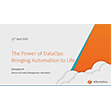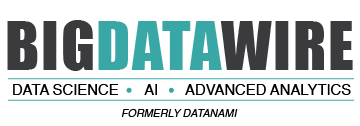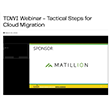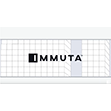

(Victoria 1/Shutterstock)
The cloud is unavoidable these days, as it has become the default infrastructure for many data workloads. But cracks are appearing in the cloud’s walls, thanks to cost overruns and fear of lock-in. Those are just some of the concerns shared by industry experts as they predict what 2023 will bring.
Cloud cost optimization is on many tech executives’ minds, and that will inevitably lead many workloads back on-prem, says Jonathan Symonds, CMO of object storage vendor MinIO.
“At the end of the day, for known workloads, there is going to be a very strong pull for repatriation. We’re seeing that with our customer base now,” Symonds says. “You go to the cloud for developer agility, for elasticity, for flexibility. But once you are done optimizing for that, you optimize for cost. And when you optimize for cost, you basically are going to pull it back down. You’re either going to go to an Equinix co-lo and lease it or you’re going to buy a bunch of Supermicro boxes and run it there. So we think there’s a huge wave coming in that regard. That I think is going to be what we look for in 2023.”
In 2023, having a multi-cloud strategy will be important, says Haoyuan Li, founder and CEO, Alluxio. And so will cost optimization, he adds.
“As more organizations evolve their data strategies in 2023, multi-cloud data infrastructure adoption is accelerating and will become the new norm. Organizations are expected to embrace this trend and ensure their cloud applications are portable regardless of cloud provider,” Li predicts. “Even though the public cloud has catalyzed the growth of countless companies, the global economic uncertainties will drive large organizations with data-intensive workloads to recalibrate their cloud strategies with a higher emphasis on cost optimization, such as reducing egress costs. The focus will be on the ROI and TCO of their infrastructure, either in the cloud, on-premises, or both.”
Cloud-first will be a good bet for 2023, according to Forrester, and so will going cloud-native. In fact, 40% of firms will take a cloud-native-first strategy in 2023, the analyst group says.
“Cloud decision-makers have implemented containerized applications and they account for half of the total in their organizations. Rather than plow resources into virtual machines, organizations will accelerate investment in Kubernetes as a distributed compute backbone for both current applications as well as new workloads.”
In 2023, tech executives will recognize that having a cloud-first strategy makes sense, but having a cloud-only strategy does not, says Jesse Stockall, chief architect at Snow Software
“We are still working on reigning in cloud spend and where to appropriately place workloads,” he writes. “A few years ago, some believed on-premise hosting was dying, but this has not been the case. On-prem has a use and a purpose, and it works within a more traditional finance model. However, you need to do what works best for your industry, your skillset and your capacity. Migrating to the cloud or moving to on-prem to save money requires investment as both are niche expertise. Some organizations have completely shifted to the cloud, but we are currently in a hybrid world. Moving into 2023, companies must follow a cloud-first strategy, not a cloud-only strategy.”
Want to have maximum security in a hybrid world in 2023? (Of course you do!) Then you will need to be on the public cloud, says Google Cloud’s CISO Phil Venables.
“On-premise environments cannot maintain the same default level of security as cloud environments can in today’s hybrid world,” Venables says. “The base security of the cloud, coupled with an organization’s protected configuration, will be stronger than what any on-prem environment can realistically offer.”
Having a free open source product is good. So is having a software-as-a-service (SaaS) offering. But having both free open source and SaaS together? Now that’s a recipe for greatness, says Nima Negahban, the CEO and co-founder of Kinetica.
“When open-source software hit the data analytics scene, interest and adoption skyrocketed as organizations cited the benefits of cost effectiveness, speed and agility, community, and avoiding vendor lock in,” Negahban says. “What most companies learned was that many projects required extensive set up, integration, and maintenance that slowed both innovation and migration to the cloud. SaaS models will continue delivering on the promise and speed and agility, while reducing switching costs. Emerging Free Forever SaaS models will further make these offerings cost effective and facilitate robust developer communities.”
The future of the cloud is open, and in 2023, the cloud giants will begin to recognize this, says Steven Mih, co-founder and CEO of Ahana, a provider of Presto analytics services in the cloud.
“As the market further chooses open options for table formats, compute engines, and interfaces, the Lakehouse version of the LAMP stack will emerge. Linux Foundation and Apache Software Foundation projects will constitute those components,” Mih says. “As data and analytics workloads proliferate in the public cloud accounts, and as IT departments demand more control of their own data and applications, we’ll see the adoption of more cloud native managed services instead of full SaaS solutions. Public cloud providers will make huge investments into open source software, and make more contributions back to the community.”
Rapid cloud growth has led to some messiness, but in 2023, some of that messiness will start to be reigned in through a “metacloud” or even a “supercloud,” predicts Deloitte’s Chief Futurist Mike Bechtel.
“Ten years of heterogeneous multicloud deployments has created considerable complexity in cloud management,” Bechtel says. “Enterprises are bringing simplicity and visibility through a common layer of abstraction and automation (called metacloud or supercloud). With these cross-cloud services managing operations, governance and security, organizations can take full advantage of cloud versatility, elasticity, flexibility, and scalability.”
The push for greater control over cloud costs will mark 2023, says Dima Spivak, COO of products at StreamSets (a Software AG company).
“There will be a greater focus on efficiency and cost-benefit for users of cloud solutions,” Spivak writes. “Companies have spent years moving data into cloud-hosted data warehouses and data lakes and, especially with uncertainty in the economy, leadership will be expected to justify the existing spend and control it moving forward. Technology companies that can provide complete end-to-end solutions for businesses undergoing digital transformation will have a significant advantage over those that don’t. As businesses look to see returns on their digital transformation investments, time-to-value and battle-tested solutions will be highly sought-after.”
As companies look to modernize their data architectures, a multi-cloud strategy will be front and center, says Balaji Ganesan, the CEO and co-founder of Privacera.
“In terms of adopting a multi-cloud environment, most enterprise-level organizations are in the ambitious early stages of migration and still have a lot of data that needs to be moved. There are some ‘born in the cloud’ enterprises that are fully integrated and working well. But over the next year, we expect the adoption of multi-cloud services to continue to rise as a majority of business leaders look to modernize their data architecture,” he says. “Since more organizations have shifted away from a single cloud solution when it comes to implementing their data strategies, we’ll see many business leaders faced with the challenge of deciding which service providers they actually want to mix and match. To help make those important decisions, we expect business leaders to take a ‘best of breed’ strategic approach that looks at individual organizational use cases.”
The “green tsunami” will hit in 2023, and the path to sustainability will travel through the cloud, says Lloyd Adams, president of SAP North America.
“Business leaders have traditionally focused on top and bottom-line performance indicators. But as changing consumer demands–coupled with stricter government regulations around ESG reporting among other laws–[it will] push companies toward greener practices, organizations will increasingly consider their green line as the leading indicator of long-term, sustainable business success,” he writes. “As a result, more companies will leverage the efficiency of the cloud to meet their sustainability goals in 2023, with a focus on achieving not just financial performance but also steering positive environmental and social impact through their sustainability metrics.”
Don’t overlook the potential of hybrid cloud architectures to boost tape sales, according to Phil Storey, the CEO of XenData.
“Hybrid cloud storage means different things to different people,” he says. “For many, combining file and object access to the same storage system allows their organization to use both file-based and native-cloud applications to address the same unstructured content. A combined file/object storage approach provides a smooth path to hybrid cloud storage. And this is not just limited to disk-based object storage, as the increasing availability of file/object storage interfaces for on-premises tape archives allows users to take advantage of the reliability and economies of data tape for active archives.”
A more defensive posture among companies in 2023 will help illuminate the benefits of hybrid cloud storage and tape, says IBM Business Line Executive Data Retention Infrastructures Product Manager Kiyoshi Urabe.
“Data center leaders will be evaluating technology based on cost and ESG impact. This will drive processes to move data to lower energy consumption models, models like moving data directly from operational flash to tape,” Urabe says. “Tape’s low cost of acquisition, low total cost of ownership, and sustainable design make it an ideal candidate in these infrastructures. Growth in tape hardware and media capacity shipments is expected to continue in 2023.”
Related Items:
Big Things Ahead for AI in 2023: Predictions
Analytics Predictions for 2023
Unleash the 2023 Big Data Predictions!
February 6, 2025
- SoftServe Survey Finds 58 Percent of Leaders Report Using Inaccurate Data
- Oracle Recognized as a Leader in the 2025 IDC MarketScape
- Cognida.ai Secures $15M Series A from Nexus Venture Partners
- TrueFoundry Secures $19 Million Series A Funding to Transform AI Deployment
- Glean Achieves $100M ARR in Three Years
- Moveworks Launches Quick GPT
- Qumulo Announces Cloud Data Fabric File System
- Aerospike Unveils Database 8 with Distributed ACID Transactions for OLTP
February 5, 2025
- Lightning AI Brings DeepSeek to Private Enterprise Clouds with AI Hub
- PEAK:AIO Powers AI Data for University of Strathclyde’s MediForge Hub
- dbt Labs Surpasses $100M ARR, Expands Global Customer Base
- Qlik Connect 2025 Brings AI, Iceberg, and Automation to the Forefront
- Immuta Finds Legacy Data Provisioning Systems Are Hindering AI Adoption
- Arcitecta Named a Leader in Coldago Research’s Map 2024 for Unstructured Data Management
- Hydrolix Releases Apache Spark Connector for Databricks Integration
February 4, 2025
- MindBridge Partners with Databricks to Deliver Enhanced Financial Insights
- SAS Viya Brings AI and Analytics to US Government with FedRAMP Authorization
- Percona Announces Comprehensive, Enterprise-Grade Support for Open Source Redis Alternative, Valkey
- Alluxio Enhances Enterprise AI with Version 3.5 for Faster Model Training
- GridGain Enables Real-Time AI with Enhanced Vector Store, Feature Store Capabilities
- The Top 2025 Generative AI Predictions: Part 1
- Inside Nvidia’s New Desktop AI Box, ‘Project DIGITS’
- OpenTelemetry Is Too Complicated, VictoriaMetrics Says
- PayPal Feeds the DL Beast with Huge Vault of Fraud Data
- The Top 2025 GenAI Predictions, Part 2
- 2025 Big Data Management Predictions
- Big Data Career Notes for December 2024
- Slicing and Dicing the Data Governance Market
- Why Data Lakehouses Are Poised for Major Growth in 2025
- What Are Reasoning Models and Why You Should Care
- More Features…
- Meet MATA, an AI Research Assistant for Scientific Data
- IBM Report Reveals Retail and Consumer Brands on the Brink of an AI Boom
- Oracle Touts Performance Boost with Exadata X11M
- Dataiku Report Predicts Key AI Trends for 2025
- AI Agent Claims 80% Reduction in Time to Complete Data Tasks
- Sahara AI’s New Platform Rewards Users for Building AI Training Data
- Qlik and dbt Labs Make Big Data Integration Acquisitions
- Bloomberg Survey Reveals Data Challenges for Investment Research
- Collibra Bolsters Position in Fast-Moving AI Governance Field
- Observo AI Raises $15M for Agentic AI-Powered Data Pipelines
- More News In Brief…
- Informatica Reveals Surge in GenAI Investments as Nearly All Data Leaders Race Ahead
- Gartner Predicts 40% of Generative AI Solutions Will Be Multimodal By 2027
- AI and Big Data Expo Global Set for February 5-6, 2025, at Olympia London
- GIGABYTE Launches New Servers with NVIDIA HGX B200 Platform for AI and HPC
- Domo Partners with Data Consulting Group to Provide Advanced BI Capabilities to Global Enterprises
- Oracle Unveils Exadata X11M with Performance Gains Across AI, Analytics, and OLTP
- Dremio’s New Report Shows Data Lakehouses Accelerating AI Readiness for 85% of Firms
- PEAK:AIO Powers AI Data for University of Strathclyde’s MediForge Hub
- Exabeam Enhances SOC Efficiency with New-Scale Platform’s Open-API Integration
- Centific Integrates NVIDIA AI Blueprint to Advance Video Analytics Across Industries
- More This Just In…































